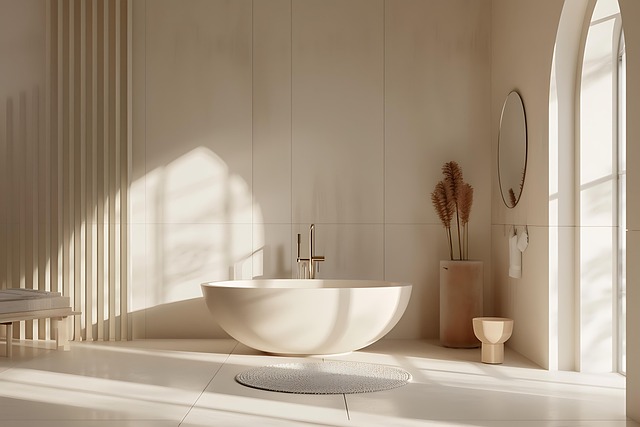Optimizing bathroom water usage through water-saving showerheads, low-flow toilets, and efficient faucets is a crucial step towards sustainable habits. These solutions significantly reduce water consumption and utility costs while maintaining performance and user satisfaction. Regular maintenance and tracking of water usage further enhance sustainability efforts, allowing for measurable progress and continued motivation toward environmental conservation.
In today’s digital era, sustainable bathroom practices are not just an environmental responsibility but a significant step towards preserving our planet’s resources. This article explores the best practices for sustainable bathroom use, focusing on understanding water usage and leveraging tools like water-saving showerheads to reduce consumption. We’ll also delve into additional tips, measuring progress, and how these simple changes can have a profound impact.
- Understanding Water Usage in Bathrooms
- The Role of Water-Saving Showerheads
- Additional Tips for Sustainable Bathroom Practices
- Measuring and Tracking Your Progress
Understanding Water Usage in Bathrooms
In the quest for sustainable bathroom practices, understanding water usage is a key first step. Bathrooms, often overlooked, contribute significantly to household water consumption. The average family can save up to 2,000 gallons of water annually by installing water-saving showerheads—a simple yet effective solution. These showerheads are designed to reduce water flow without compromising on performance, ensuring you still get a satisfying shower experience.
Water-saving fixtures and appliances play a crucial role in preserving this precious resource. Beyond showerheads, consider low-flow toilets and efficient faucets. These innovations not only decrease water usage but also lower utility bills. By adopting these best practices, we can significantly mitigate our environmental impact while promoting a more sustainable lifestyle.
The Role of Water-Saving Showerheads
Water-saving showerheads are a simple yet effective way to reduce your bathroom’s environmental footprint. These innovative devices are designed to minimize water usage without compromising on performance, ensuring that every drop counts. By incorporating advanced technology, they deliver a powerful and enjoyable showering experience while using significantly less water than traditional models. This small change can lead to substantial savings in both water consumption and energy costs over time.
The benefits extend beyond individual households; widespread adoption of water-saving showerheads contributes to conservation efforts on a larger scale. By reducing the strain on local water supplies, these heads help preserve this precious resource for future generations. With various styles and designs available, consumers can easily find options that suit their preferences and lifestyle, making sustainable bathroom practices more accessible and appealing.
Additional Tips for Sustainable Bathroom Practices
Implementing sustainable practices in your bathroom doesn’t stop at choosing eco-friendly products. Here are some additional tips to further reduce your environmental impact:
Consider installing water-saving showerheads, which can significantly cut down on hot water usage and energy consumption. These heads are designed to provide a satisfying shower experience while using less water, ultimately reducing your carbon footprint. Regularly maintaining and cleaning these devices ensures optimal performance over time. Additionally, fixing any leaky faucets immediately is an easy yet powerful step; even small leaks can waste a considerable amount of water annually.
Measuring and Tracking Your Progress
Measuring and tracking your bathroom habits is a powerful way to stay motivated on your sustainability journey. Start by monitoring your daily water usage – this can be done easily with smart meters or even simple visual cues like filling a bucket during showering. By keeping a log, you’ll quickly identify areas where you can make adjustments. For example, did you know that installing water-saving showerheads can reduce hot water consumption by up to 70%? Regularly reviewing your progress will help you stay on track and encourage you to adopt more eco-friendly practices in the bathroom.
Additionally, set specific goals related to water conservation, such as reducing overall usage by a certain percentage each month. This structured approach allows you to celebrate milestones and continuously improve. Remember, small changes can lead to significant environmental impacts over time – every drop counts!
By adopting simple yet effective strategies, such as installing water-saving showerheads and tracking your water usage, you can significantly contribute to sustainable bathroom practices. These best practices not only help conserve precious resources but also promote a greener lifestyle. Remember, every drop counts, and with conscious efforts, we can make a tangible difference in our daily routines.
